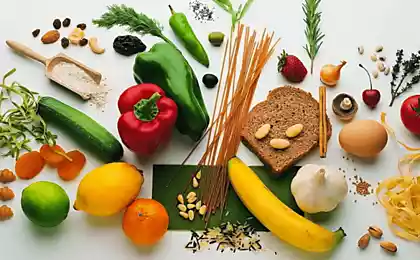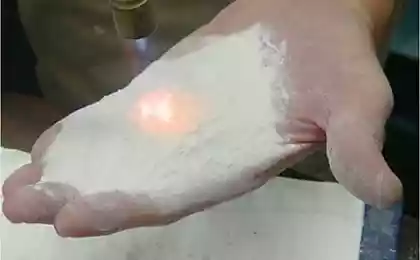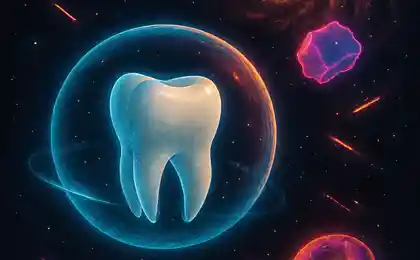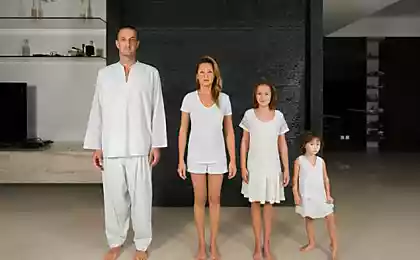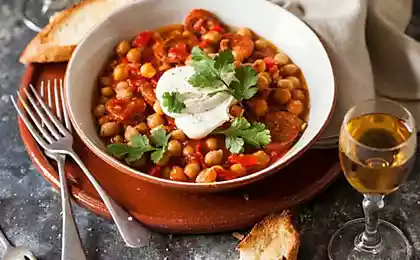621
Than our ancestors painted fabric
Dyeing is known to mankind since time immemorial, how do you think archaeology is not less than 30 thousand years. Chemical plants, as you know, was not, but our ancestors were very inventive in finding means to diversify the color palette of fabrics and yarn.
Arab merchants, for example, was brought from India, a dye which by name gives the origin of Indigo. It is made from the stems and leaves of plants of the genus indigofera. Just imagine: for 3 kg of product needed to process a hundredweight of plant materials! By the way, Basma, and in our days made from the leaves of indigofera.
Very common was alizarin, which was extracted from the roots of madder in ancient Egypt, Persia and India. Another ancient dye was purple. Tiriki purple was extracted from snails-baranek, crushing them with water. The mixture was impregnated and dried fabric on the street, I mean – not in the room. Only after this material has acquired a purple colour.
It was an enormous work, because only one gram of dye was necessary to pound or 10 thousand fragile creatures. But Venice is the raw material for local purpura had some dried bugs (though Venetian purple valued less).

Overview of the global history of dyes textiles could continue, but because "it is the tale, and fairy tale... fairy tale will come", let's stop here and move on to the question of, used for dyeing Russians. Turns out they were very knowledgeable about the possibilities offered for this fauna, and taking into account these features have received a different color.
Yellow and brownDecided to get Sunny color, our ancestors were able to use more than two dozen plants. Some of them were used as a whole: it is a Helichrysum, Heather, cuff, chamomile, succession. But in a sort of drakov, shrubs and dwarf shrubs of the legume family, and does have, which right is called dyeing.
With the same purpose was used the leaves and flowers of goldenrod (also known as Golden rod), jumper (also with second title – touchy), grass sebuhi. Only the flowers were taken when it was about jastrebinka umbrella, and, oddly enough, meadow cornflower, and the Lotus corniculatus. By the way, in the course were birch leaves and cerdotola (or verboloz).
On the root system of the plants zealous owners didn't forget: here was useful sorrel, toffee (he was very affectionate nickname – iris). And of the hazel and wild Apple trees in the dyeing order to take the bark. Sometimes certain parts of the plants were chosen based material that had to be painted. So, the leaves and stems of club mosses (aka barometz), as well as the flowers of colza were taken into account when working with wool, and globeflowers used only for the canvas.
Both yellow and brown tone can be obtained on the basis of bark, leaves and berries of the buckthorn olhovidnoy. According to experts, the dye from this plant have a very high resistance to fading.
Orange and redTo the canvas "polygala", folk methods were significantly lower. It could provide the bark of the black alder. And in order to achieve the desired result with the help of celandine, to it was added the alum.
In the red range of possibilities there were more and mainly in the quality of dyes used the roots of the plants, in particular, cinquefoil (also called five-leaf and serebryanom), grechishnikov (i.e. crayfish), bedstraw soft (it's derabi, Kosma-grass) Galium verum (we are talking about sequence yellow PAP). If the material was wool, then used the roots of Hypericum tetrahedral. But there was the ground part of the weed, due to which the fabric "blush": it is a white pigweed, and simply put – quinoa.
Blue, blue and greenthe Blue cloth attached using the bark of the ash, and, if necessary, to dye wool, flowers of cornflower or grechki. Bird crap (people call weed the field) are able to dye material in blue color, while the whole plant is used as Wajda, which has several expressive names: cineclick, sinil, Sinelnik, and moreover, krutik. This is Wajda-krutik was used as dye wool materials and is highly valued in the handicraft production of carpets. Blueberries were used for the staining of linen in blue, and wool blue.
By the way, just mentioned Wajda-krutik was used to produce green colors. However, along with other plants. Thus, in particular, the stems and leaves well-known nettle and watches, i.e., the trefoil, the leaves of club mosses Bulavinov, the roots of tansy (wild Rowan).
Blackto achieve black tones of the material, was used a few plants. They include the berries and roots of the funnel (funnel), bark meadowsweet vyazolistny, leaves and stems of Butterbur, leaves of bearberry (different- bear ears) and the juice of the herb with a funny name zyuzik brilliant. He has a number of folk names: water Horehound, wolf foot (or paw), wild Queen, konopel forest, swamp nettle, krupchatka, heart grass, Stachys).
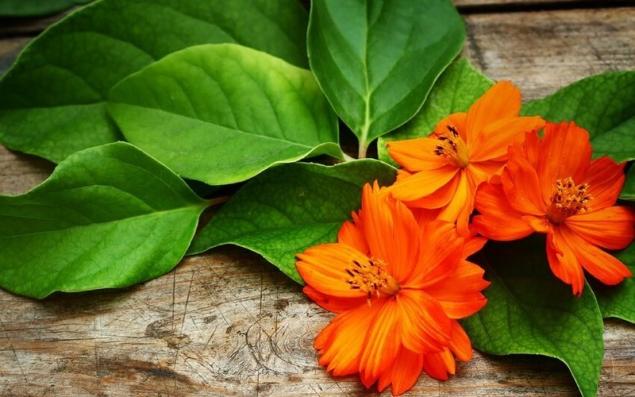
"Mixed ability" of plantsIn the course of the story already intimated that some representatives of the earthly flora capable of different technologies to obtain different tones. And the first thing that comes to mind is the well-known onion skins and beets. But they are not the only one in this group.
So, using flowers and leaves of the tree, or its bark, with the addition of alum, it is possible to achieve like red and green paint. From flowers and leaves of St. John's wort ordinary cloth and with appropriate treatment can become red or yellow. Plaun double-edged (otherwise: scout, the dog) are able to colour the canvas with green, yellow and red.
Blackberries are able to give fabrics of crimson and violet, and oak bark, with the addition of rusty iron, from dark blue to black. If a wild bean Supplement the same rusty iron, or alum, you get the same effect. The white alder and all can paint the material color from yellow to black, if you add to it that – again – rusted iron... fir cones.
Also interesting: As in the old days did warm floor
How to build in Russia

In concluding this brief overview, I would like to Express two ideas. First, be glad as dorogostaisky used vegetable gifts of our ancestors, what great work they did, collecting, preparing them and producing the dyes and how broad and deep was heated by centuries of knowledge about the properties of plants. Second, how great are the possibilities of the plant Kingdom and how we should be grateful! Of course, manual and artisanal dyeing is now rarely used, but not in this case...Want to try? published
Author: Valentina Ponomareva
P. S. And remember, only by changing their consumption — together we change the world! ©
Source: www.ruslife.org.ua/post119769977/
Arab merchants, for example, was brought from India, a dye which by name gives the origin of Indigo. It is made from the stems and leaves of plants of the genus indigofera. Just imagine: for 3 kg of product needed to process a hundredweight of plant materials! By the way, Basma, and in our days made from the leaves of indigofera.
Very common was alizarin, which was extracted from the roots of madder in ancient Egypt, Persia and India. Another ancient dye was purple. Tiriki purple was extracted from snails-baranek, crushing them with water. The mixture was impregnated and dried fabric on the street, I mean – not in the room. Only after this material has acquired a purple colour.
It was an enormous work, because only one gram of dye was necessary to pound or 10 thousand fragile creatures. But Venice is the raw material for local purpura had some dried bugs (though Venetian purple valued less).

Overview of the global history of dyes textiles could continue, but because "it is the tale, and fairy tale... fairy tale will come", let's stop here and move on to the question of, used for dyeing Russians. Turns out they were very knowledgeable about the possibilities offered for this fauna, and taking into account these features have received a different color.
Yellow and brownDecided to get Sunny color, our ancestors were able to use more than two dozen plants. Some of them were used as a whole: it is a Helichrysum, Heather, cuff, chamomile, succession. But in a sort of drakov, shrubs and dwarf shrubs of the legume family, and does have, which right is called dyeing.
With the same purpose was used the leaves and flowers of goldenrod (also known as Golden rod), jumper (also with second title – touchy), grass sebuhi. Only the flowers were taken when it was about jastrebinka umbrella, and, oddly enough, meadow cornflower, and the Lotus corniculatus. By the way, in the course were birch leaves and cerdotola (or verboloz).
On the root system of the plants zealous owners didn't forget: here was useful sorrel, toffee (he was very affectionate nickname – iris). And of the hazel and wild Apple trees in the dyeing order to take the bark. Sometimes certain parts of the plants were chosen based material that had to be painted. So, the leaves and stems of club mosses (aka barometz), as well as the flowers of colza were taken into account when working with wool, and globeflowers used only for the canvas.
Both yellow and brown tone can be obtained on the basis of bark, leaves and berries of the buckthorn olhovidnoy. According to experts, the dye from this plant have a very high resistance to fading.
Orange and redTo the canvas "polygala", folk methods were significantly lower. It could provide the bark of the black alder. And in order to achieve the desired result with the help of celandine, to it was added the alum.
In the red range of possibilities there were more and mainly in the quality of dyes used the roots of the plants, in particular, cinquefoil (also called five-leaf and serebryanom), grechishnikov (i.e. crayfish), bedstraw soft (it's derabi, Kosma-grass) Galium verum (we are talking about sequence yellow PAP). If the material was wool, then used the roots of Hypericum tetrahedral. But there was the ground part of the weed, due to which the fabric "blush": it is a white pigweed, and simply put – quinoa.
Blue, blue and greenthe Blue cloth attached using the bark of the ash, and, if necessary, to dye wool, flowers of cornflower or grechki. Bird crap (people call weed the field) are able to dye material in blue color, while the whole plant is used as Wajda, which has several expressive names: cineclick, sinil, Sinelnik, and moreover, krutik. This is Wajda-krutik was used as dye wool materials and is highly valued in the handicraft production of carpets. Blueberries were used for the staining of linen in blue, and wool blue.
By the way, just mentioned Wajda-krutik was used to produce green colors. However, along with other plants. Thus, in particular, the stems and leaves well-known nettle and watches, i.e., the trefoil, the leaves of club mosses Bulavinov, the roots of tansy (wild Rowan).
Blackto achieve black tones of the material, was used a few plants. They include the berries and roots of the funnel (funnel), bark meadowsweet vyazolistny, leaves and stems of Butterbur, leaves of bearberry (different- bear ears) and the juice of the herb with a funny name zyuzik brilliant. He has a number of folk names: water Horehound, wolf foot (or paw), wild Queen, konopel forest, swamp nettle, krupchatka, heart grass, Stachys).

"Mixed ability" of plantsIn the course of the story already intimated that some representatives of the earthly flora capable of different technologies to obtain different tones. And the first thing that comes to mind is the well-known onion skins and beets. But they are not the only one in this group.
So, using flowers and leaves of the tree, or its bark, with the addition of alum, it is possible to achieve like red and green paint. From flowers and leaves of St. John's wort ordinary cloth and with appropriate treatment can become red or yellow. Plaun double-edged (otherwise: scout, the dog) are able to colour the canvas with green, yellow and red.
Blackberries are able to give fabrics of crimson and violet, and oak bark, with the addition of rusty iron, from dark blue to black. If a wild bean Supplement the same rusty iron, or alum, you get the same effect. The white alder and all can paint the material color from yellow to black, if you add to it that – again – rusted iron... fir cones.
Also interesting: As in the old days did warm floor
How to build in Russia

In concluding this brief overview, I would like to Express two ideas. First, be glad as dorogostaisky used vegetable gifts of our ancestors, what great work they did, collecting, preparing them and producing the dyes and how broad and deep was heated by centuries of knowledge about the properties of plants. Second, how great are the possibilities of the plant Kingdom and how we should be grateful! Of course, manual and artisanal dyeing is now rarely used, but not in this case...Want to try? published
Author: Valentina Ponomareva
P. S. And remember, only by changing their consumption — together we change the world! ©
Source: www.ruslife.org.ua/post119769977/





